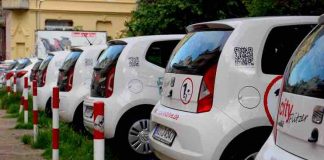
With the growing popularity of online platforms, more private data or information about individuals is available for the public. Shared and published information may not be sensitive, but some users upload their personal information so that accessibility can be dangerous. It is riskier when the spread data can be traced and lead to sensitive information disclosure.
Generally, privacy has different meanings for different occasions. Information privacy can be defined in several different ways – as a moral or a legal right and a person’s capacity to control information about oneself. No matter how limited privacy is, it is clear that privacy issues are arguable, unstable, contradictory, and varied, as they are mainly related to human rights. This article will discuss legal and ethical implications of the issue connected with personal behavior, communication, and data privacy.
Impact Of Social Media On Society And Culture
Social media networks have changed society on both a micro and macro level by enabling unlimited communication and information access. Individuals can connect with each other daily and share their stories and opinions on the micro-level. On the macro level, it has helped to organize events and help businesses to promote their brands and products, and also gatherings,
However, it has cons as well, which open up after an in-depth analysis of this phenomenon. Disadvantages include victimization, aggression, bullying during online communication – so-called “cyberbullying,” illegal activities that may be planned through social media, including crimes, unauthorized data distribution, and personal information’s illicit use.
Types Of Social Media Platforms
Based on communication type, there are top 4 social media sites: user-based – users publish content, they control the information distribution; interactive: besides chats, users have many other options, such as uploading and sharing visual content, playing games, etc. Community-based – unite users with similar interest and connection; relationship-based – relies on a friend or follower principle. If privacy settings are not set up, information can be distributed to others. So internet safety should be one’s top priority, especially when addressing third-party assistants for help who require login and password credentials or other types of private information. On the contrary, sites like SocialWick offer a quick boost for your online media accounts without requesting any personal data. SocialWick for example, has a clean history of 6 million fulfilled orders.
Types Of Threats
User authentication is often used for data protection, and it is the first step for signing up on a website. It is designed to abstain from identity theft and illegal information proliferation. Authentication includes login and user, however, protection of this data is the user’s responsibility. User-based social platforms hold content about users’ experiences, views, skills, private data, as name, gender, living location, personal photos. This online-shared information is preserved and is permanent and distributable. Social media platforms may impose several common threats which have existed even before social media. They include:
- Cyberstalking, harassment, and bullying – for example, anonymous sexual harassment.
- Malware –stands for malicious software. It is designed to log into someone’s computer and grant access to their login and password contents to the intruder. This kind of violation is easy to solve as most sites offer users protection from it. It has no much harm, as the worst it can do is to impersonate the victim and send messages to their friends or followers, so it is considered a criminal act.
- Spam – messages from unwanted sources usually include fake advertisements or sketchy links that can lead to phishing or malware sites. They typically are received from fake or stolen accounts or bots. Fortunately, spam-detecting programs exist that determine malicious links and content.
- Phishing is another type of attack in which the violator receives the user’s personal information by disguising oneself as a reliable third party with an already stolen or fake identity.
- Cross-Site Scripting is a more serious security threat. It allows an attacker to put an invasive code on the target’s browser and steal data contained in history, such as saved passwords and credit card details. Moreover, an intruder can create this type of data acquiring virus and spread it through the internet.
- Clickjacking – an attack on a user’s interface that tries to make the victim user click on something they don’t intend to. With this technique, attackers can even use a microphone or camera of the user’s computer.
- Fake profile attack – an attacker creates an account with fake information and sends spam messages to users.
- Account copying can be done by stealing another account’s data and can be used within the same network or another.
- Inference threats – use illegal data mining techniques to attain users’ sensitive and personal information they do not want to spread.
- Consented Information leakage, users willingly share private information with the public, for example, location or health issues, which can be attainable for different organizations.
- Account surveillance – a technology that allows third parties to monitor and store users’ activities on social media.
Want to read more of our posts? Check out the article about selling art on Social Media, or our post about Software Development Service Providers.




